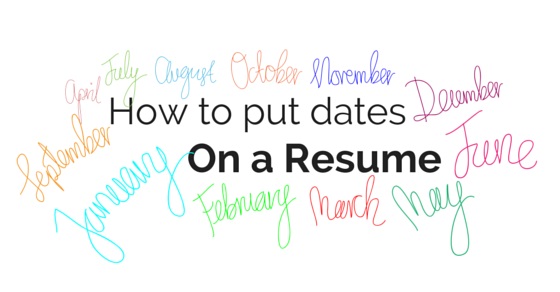Resumes are an inevitable tool for the beginning of all careers and remain primarily so, during the entire duration of the career.
It is the first and for many, the last chance one has, to capture a potential-employer’s attention and portray a positive first-impression about them.
Statistically speaking, employers have been known to spend on an average, nothing more than a few seconds looking at a resume, so it becomes essential to be in possession of one that gives them a reason to more than just glance over it; one that stands out amongst the countless other resumes they receive.
 Writing a great resume doesn’t necessarily require you to follow all the rules of formal-writing; it is instead a marketing communication that is unique by itself, and is appropriate, well-tailored to your situation.
Writing a great resume doesn’t necessarily require you to follow all the rules of formal-writing; it is instead a marketing communication that is unique by itself, and is appropriate, well-tailored to your situation.
Your resume is to adapt, and include & exclude certain features depending upon the kind of profession you are looking for, your qualifications, your age, years of experience etc., thus highlighting the skills you are adept at, while easily correlating to the job requirements.
There are many ways of formatting a resume, the most common being either a chronological resume that places more emphasis on the employment history over skills, or functional resume that focuses more on skills and achievements over job titles.
However, regardless of which type of resume is chosen, what all employers basically want, is common to all.
Work Experience & Skill Set:
Your work experience and the skill set that you possess largely make up the reason why you would be hired.
A senior level CV need not have detailed explanations of the work experience of the early days of the career.
However, a clear, crisp and comprehensible enlisting of your profile responsibilities is key. Skill sets can, as a suggestion, be very simply and concisely mentioned as bullet points.
Personal Details & Educational Qualifications:
 This would consist of your contact information, mailing addresses, etc. along with a clear representation of every educational degree that you may have in your kitty.
This would consist of your contact information, mailing addresses, etc. along with a clear representation of every educational degree that you may have in your kitty.
Even educational degrees, which may be irrelevant to the job should be mentioned.
It is one of the largest known truths about the talent-recruitment process – An employer will take meager 2 seconds to select a candidate for the primary rounds of discussion, on the basis of the CV.
Here the entire responsibility of this impression lies with the content present in the top-half of your first page. Also, research shows that employers take only 10 seconds into the first round of interview, deciding whether a candidate should be considered for advanced rounds of conversation.
A strong resume deals out information in a very systematic manner: one that uses keywords, descriptions, tables, and dates in an effective, reader-friendly layout.
People who’re looking for jobs, and thus, searching for good resume tips and ‘How-To’s, online, would realize how most of the articles deal with the all the other aspects, barring one of the very important ones – ‘dates’.
About Dates of Employment:
The laying down of dates in a resume is as important as mentioning your skill set or personal objectives – if effectively used, it can catapult your resume to the next level within no time.
At this point in the article, you may not believe, but the dates on your resume can stand for your performance, consistency, stability, career graph and your competitiveness.
1. Stability:
 While jumping jobs is considered healthy for achieving a decently paced career graph, too many changes in relatively shorter spans of times scream instability. And instability is often a precursor to rejection.
While jumping jobs is considered healthy for achieving a decently paced career graph, too many changes in relatively shorter spans of times scream instability. And instability is often a precursor to rejection.
Recruiters always try to achieve a healthy attrition rate with a good mix of fresh and seasoned talent.
Mention your dates clearly to show how long you have spent with every organization you have worked with.
2. Performance:
Calling yourself ‘an asset to the organization’ is no more an attribute that you can sell; recruiters look for performers.
Write dates in a fashion such that you project yourself to be an employee who regularly achieves small or mid-sized milestones.
However, do not mention every mundane achievement. Going overboard may portray that you don’t have too much of value to talk about.
3. Consistency:
Not only are employers looking for performers, they are looking for consistency in performance too.
Line up your dates in a fashion such that you portray a certain level of consistency and don’t end up being termed a ‘one-time success story’.
4. Continuity in Work Experience:
Not only would your dates serve the purpose of highlighting your stability, they will also show that there are no gaps in your work experience.
Gaps in your dates are often frowned upon and mostly invite a lot justification and quite commonly, rejections, unless there are genuine cases of unforeseen circumstances or medical requirements etc.
5. Frequency of Promotions:
 Within your stay in every organization, mention clearly the periods for which you have held each designation.
Within your stay in every organization, mention clearly the periods for which you have held each designation.
It shows the pace at which your career graph was moving in the previous organization and hence, the time that you need to develop sufficient skill sets apart from experience to grow into a role that is higher than your level.
6. Dates for training or other skill-acquisition:
Mention any dates of relevant skill acquisition that you may have done within or outside of your organization. It shows that you are not someone who is in a comfort zone or complacent.
Projection of your understanding of the need for continual development in the face of fresher talent and ideas would ensure that you are perceived as someone who refuses to be counted as irrelevant or redundant with time.
7. Special Recognition:
Make sure you mention any special recognition that you may have received all with your dates.
It shows and/or how recently your performance has been publicly acknowledged. Public appreciation holds immense value.
Your presentation of the dates should be such that one set of dates should not cannibalize the visibility or importance of another set of dates. Of course, along with these important points, add as many relevant dates such as the date-of-birth, graduation dates, and so on. However, do not go overboard with the use of dates – moderation is the key even if it comes to moderation.







































